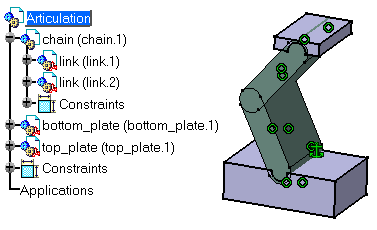 |
-
Edit or double-click Articulation to make it UI Active (User Interface Active, in blue color).
-
Select link.1 and move it with the compass:
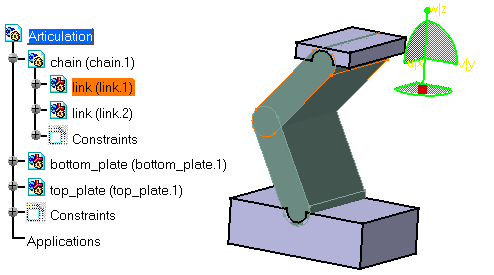
The compass is not positioned on link.1 because the component is rigid and this is its instance within the product, Chain.1, which is taken into account.
-
As a result, you cannot move link.1 independently from link.2. The whole assembly (Chain.1) moves because its sub-components (link.1 and link.2) are rigid.
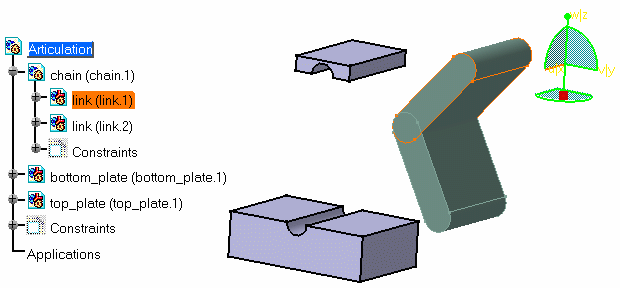
-
Undo this action to return to the initial state.
-
Edit or double-click Chain.1 to make it UI Active (in blue color) in order to be able to move the instance of the link.1 reference.
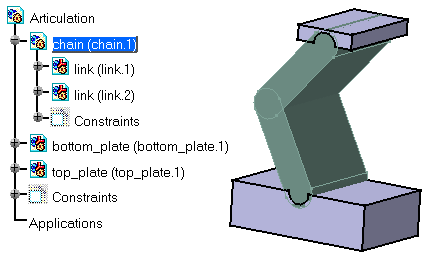
-
Select link.1 and and move it with the compass: Note that if chain (chain.1) is UI-Active , you cannot move chain from Articulation. You can move the "sons" of the UI-Active object and not the object itself (the UI-Active "father"). You cannot move an object with respect to itself.
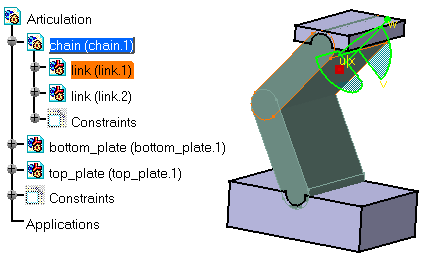
Note that in this case, the compass is positioned on link.1.
-
You can now move link (link.1) independently from link (link.2).
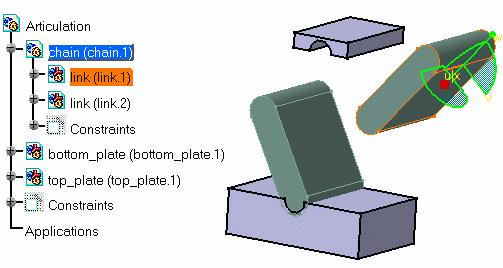
If you double-click link (link.1), it becomes highlighted in blue (UI-Active) and you will not be able to move its "father".
Therefore, to move a sub-product in a rigid structure, you need to edit its parent product.
![]()